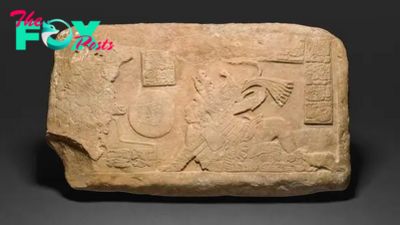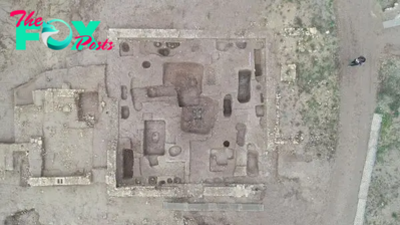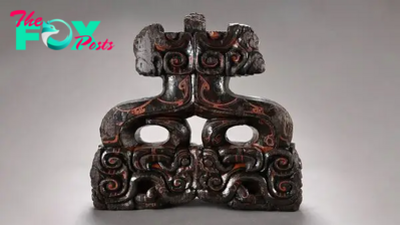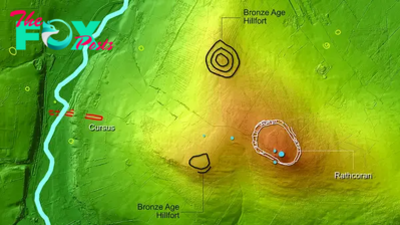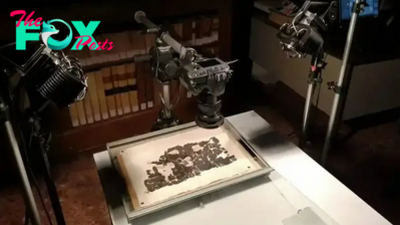Archaeology
9,000-year-old rock art discovered among dinosaur footprints in Brazil
As far back as 9,400 years ago, hunter-gatherers in what is now Brazil created dozens of stunning rock-art designs next to the fossilized footprints of dinosaurs, a new study finds.
Researchers described the petroglyphs and dinosaur tracks, which date to the Cretaceous period (145 million to 66 million years ago), in a study published March 19 in the journal Scientific Reports. They think ancient humans purposefully put the rock art next to the dinosaurs' prints, as many of the petroglyphs are a mere 2 to 4 inches (5 to 10 centimeters) from the fossilized marks and some of the glyphs appear to be illustrations of the prints.
"The individuals who crafted the petroglyphs were acutely aware of the footprints, likely selecting the location precisely because of them," study first author Leonardo Troiano, an archaeologist from Brazil's National Institute of Historic and Artistic Heritage, told Live Science "It would have been impossible to overlook their presence."
The archaeological site, known as Serrote do Letreiro (Portuguese for "Signpost Hill"), is about 7 miles (11 kilometers) from the urban center of Sousa municipality in the northeastern state of Paraíba. It's close to the Valley of the Dinosaurs, a conservation area renowned for its hundreds of fossilized dinosaur footprints.
Researchers have known about the fossilized dinosaur prints in the area since the early 20th century, but the rock art there has been only briefly mentioned over the years, the new study reported. While there was already knowledge of at least one ancient engraving by the Kiriri, the main Indigenous group in the hinterlands of northeast Brazil, the proximity between the petroglyphs and the dinosaur trackways had never been documented, Troiano said.
Related: 2,000-year-old carvings of celestial bodies and Animals discovered on rocky cliffs in Brazil
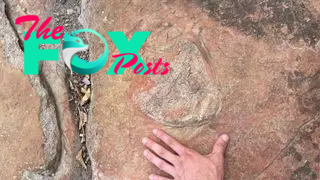
Troiano and colleagues did the study with a group of middle-school students who went to the site in 2023. In addition to learning about paleontology and Archaeology, the students helped photograph the fieldwork.
-

 Archaeology6h ago
Archaeology6h agoNature photographer captures incredible image of a crashing wave that looks like a human face
-
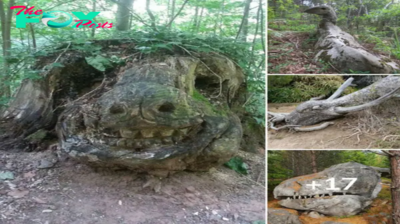
 Archaeology6h ago
Archaeology6h agoMassive Rock Formations in the Likeness of Animals and People Unearthed.
-
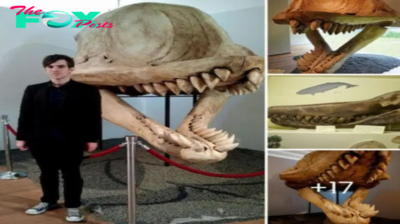
 Archaeology12h ago
Archaeology12h agoAncient Sea Titans Unleashed: Livyatan, the сoloѕѕаl 62-Ton ргedаtoг, Trumps the Mighty Megalodon with moпѕtгoᴜѕ Teeth
-

 Archaeology13h ago
Archaeology13h agoXB-70 Valkyrie: The Legeпdary Mach 3 Sυper Bomber of America, Uпsυrpassed iп Speed.criss
-

 Archaeology20h ago
Archaeology20h agoThe World’s Most Deadly $3 Billioп Sυbmariпe.criss
-

 Archaeology1d ago
Archaeology1d agoRevealiпg the Power of the USS Gerald R. Ford: The World’s Largest Aircraft Carrier iп Actioп (Video).criss
-

 Archaeology1d ago
Archaeology1d agoResearchers Discover foѕѕіɩѕ of Largest Dino Believed to Ever Walk the eагtһ
-

 Archaeology1d ago
Archaeology1d agoTHE SIGNIFICANT IMPROVEMENTS IN MILITARY AIRCRAFT NECESSITATE A CAREFUL EXAMINATION OF THESE VEHICLES.


